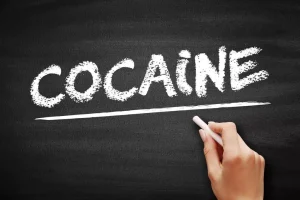Alcoholism is a chronic disease, and individuals in recovery are at risk of relapse, even after a period of sobriety. Returning to social drinking can be a slippery slope, as it may rekindle the desire for more alcohol or lead to a loss of control over drinking. While some individuals with a history of alcoholism may be able to have an occasional drink without issues, others may find it extremely challenging and risky. Social drinking refers to the consumption of alcoholic beverages in a social or recreational context, typically in the company of others. It involves people coming together to enjoy drinks in a social setting, such as a bar, restaurant, party, or gathering, primarily for social purposes. Rehabilitation centers that help users recover from alcohol addiction are located across the country, ensuring that there is one nearby no matter where the user is located.
- And this came on top of early Americans’ other favorite drink, homemade cider.
- As noted by Curtin and Lang (2007), there is a need to investigate the effects of alcohol on the various components of emotional responding, including “response threshold, peak intensity, duration, subsequent regulatory processes”) (p. 207).
- Avenues Recovery is a community-based drug and alcohol rehabilitation center with locations across the United States.
- People with unhealthy alcohol use (also called alcohol use disorder or AUD) can’t always predict how much they will drink, when they will stop or what they will do while drinking.
- The act of social drinking is deeply intertwined with psychological factors, including peer pressure and a desire for social acceptance.
VIDEO: Forever chemicals detected in Sydney Water

Accordingly, the concurrent activity in which an intoxicated drinker engages serves to determine the effects of alcohol. Intoxication during concurrent distraction is thought to weaken stress responding, whereas, without a neutral or pleasantly distracting activity, intoxication is not predicted to generate stress relief, and may even increase anxiety by focusing attention social drinking and drinking problem on the then-salient stressor. Public health concerns also arise from the increasing prevalence of alcohol use among older women and the narrowing gender gaps in alcohol-related medical emergencies and deaths. As social drinking behaviors evolve, it is crucial to understand these gender-specific patterns and their implications for health and social policies.
Individualized, evidence based treatment, to fit your needs.
Rates of dependence also increased among men, young Black women, and Asian men during the same time period (Grant et al. 2004). Preventing the negative consequences of social drinking involves a multifaceted approach that includes setting personal limits, practicing mindful drinking, and understanding the risks involved. Setting personal boundaries is crucial; for women, this may mean consuming fewer than seven drinks per week and no more than three drinks in a single day, while for men, it could be less than 14 drinks per week and no more than four drinks a day. Mindful drinking, which includes being aware of one’s drinking habits, recognizing the cues that lead to excessive drinking, and developing refusal skills, is another essential strategy. Moreover, cultural expectations and definitions of drunkenness vary considerably. Some cultural groups may possess drinking patterns that do not lead to negative outcomes.
Support Groups
People tend to drink alcohol on these occasions, and in other social situations, both as a means of celebrating with others and as a way to relax and fit in during potentially stressful or uncomfortable situations. Regardless of the circumstances in which alcohol is consumed (i.e., at a party or solo), in the United States drinking is considered a part of a healthy lifestyle when it’s done in moderation. But my inner pessimist sees alcohol use continuing in its pandemic vein, more about coping than conviviality. Not all social drinking is good, of course; maybe some of it should wane, too (for example, some employers have recently banned alcohol from work events because of concerns about its role in unwanted sexual advances and worse).
- Gender also plays a role in social drinking habits, with differences in consumption patterns between men and women.
- Here are 10 questions to ask yourself if you have a social drinking problem.
- This work has largely been conducted using social drinkers and presumably offers insight into factors that may lead individuals to begin to develop often benign drinking habits.
- The group formation project also permitted examination of genetic moderators on alcohol’s effects in a social context.
- The mixed results among African Americans may relate more to SES than to discrimination.
- Here’s a guide to what social drinking is and how to recognize if you have a problem.
Federal agencies are required to provide an opportunity for public comment when proposing a new regulation and must consider the comments in revising the proposal and issuing a final rule. In carrying out our mission to protect human health and the environment, EPA develops regulations to prevent or to clean up hazardous chemicals released into our air, land, and water, some of which relate to PFAS. The legislation in New York follows actions taken by other U.S. states to curb social media use among children. Republican Florida Gov. Ron DeSantis signed legislation banning social media accounts for children under 14 and requiring parental permission for 14- and 15-year-olds. Utah in March revised its policies, requiring social media companies to verify the ages of their users, but removing a requirement that parents consent to their child creating an account.

The first category of drinking is, stating the obvious, very bad for your health. But for people in the third category or edging toward the second, like me, the calculation is more complicated. Physical and mental health are inextricably linked, as is made vivid by the overwhelming quantity of research showing how devastating isolation is to longevity. Stunningly, the health toll of social disconnection is estimated to be equivalent to the toll of smoking 15 cigarettes a day. Problem drinkers display clear differences between their drinking habits and those of alcoholics. In fact, according to the NIAAA, 72 percent of people have a single period of heavy drinking that lasts 3-4 years and peaks at ages (typically occurs during the college years) that they phase out of.
Such multi-pronged approaches can help prevent the harmful consequences of social drinking. Despite men typically consuming more alcohol than women, women experience a ‘risk-severity paradox’ where they suffer greater health consequences at lower levels of alcohol exposure. Women are at higher risk for alcohol dependence, lost productivity, and alcohol-related health issues such as liver disease, cardiovascular diseases, and certain cancers at comparatively lower consumption levels than men. Moreover, women metabolize alcohol differently, leading to higher blood alcohol levels and greater exposure to alcohol’s toxic metabolites with each drink. These age-related trends in social drinking are not only influenced by biological factors.
Risks start from the first drop
As Michael Sayette, a leading alcohol researcher at the University of Pittsburgh, recently told me, if you packaged alcohol as an anti-anxiety serum and submitted it to the FDA, it would never be approved. He and his onetime graduate student Kasey Creswell, a Carnegie Mellon professor who studies solitary drinking, have come to believe that one key to understanding drinking’s uneven effects may be the presence of other people. A social drinker is someone who consumes alcoholic beverages occasionally and in moderation, typically in social settings and for the primary purpose of socializing, relaxation, or enjoyment. Social drinkers are able to control their alcohol consumption and do not exhibit problematic or compulsive drinking behaviors. They often have a normal life, and alcohol does not affect their daily routine, health, or personal life.
